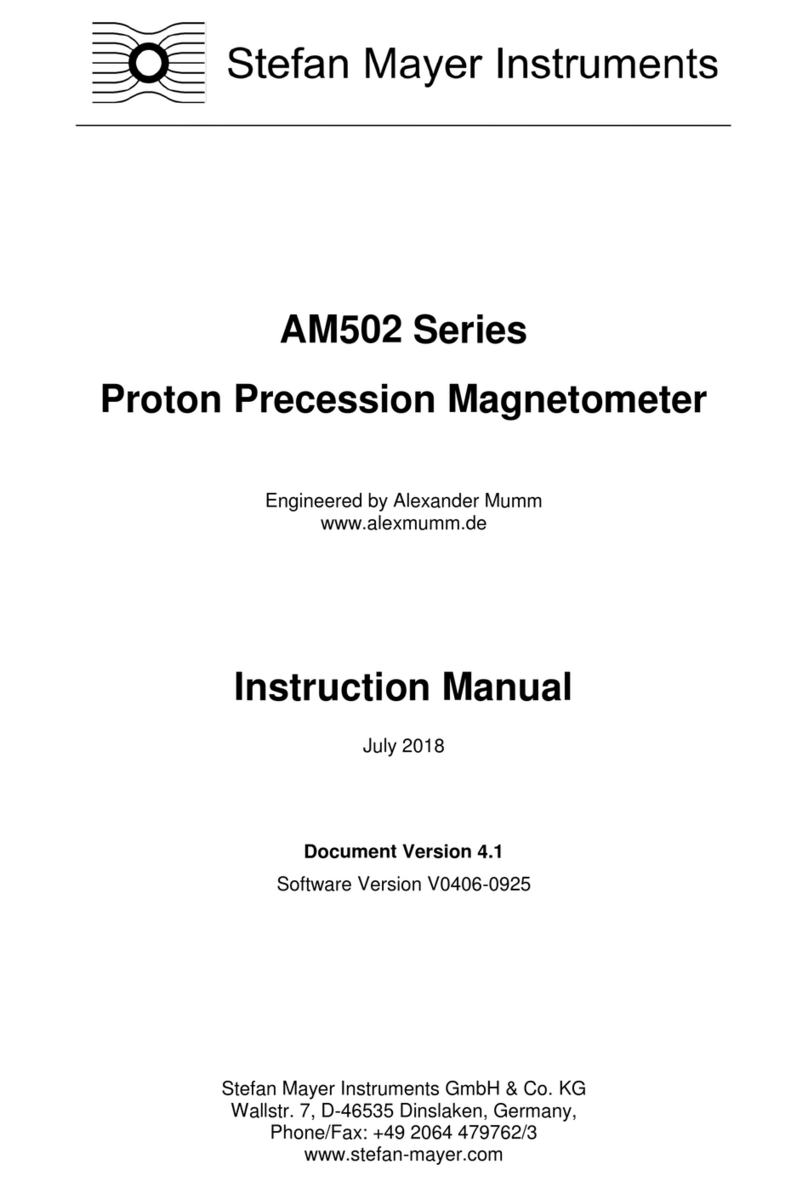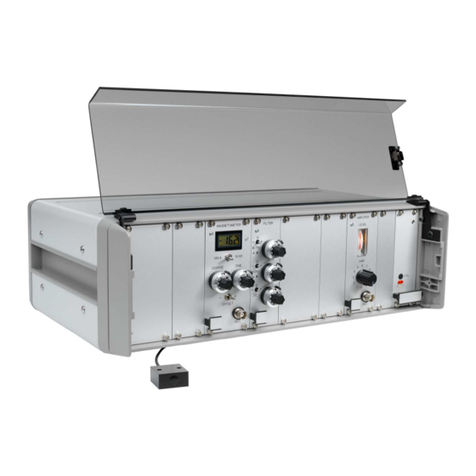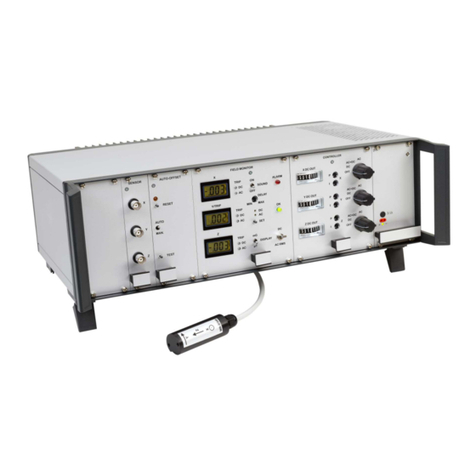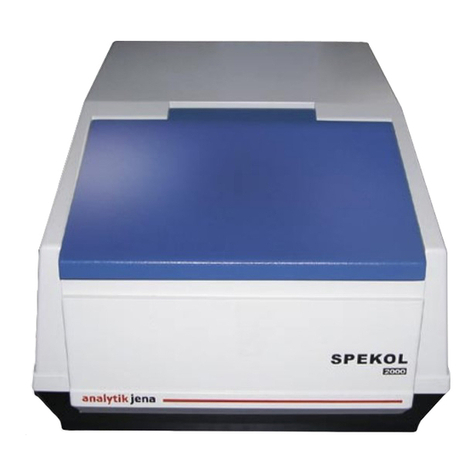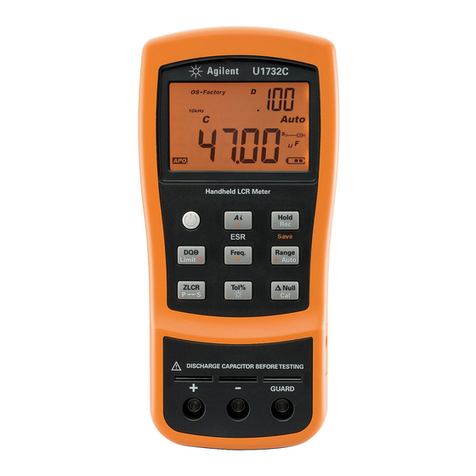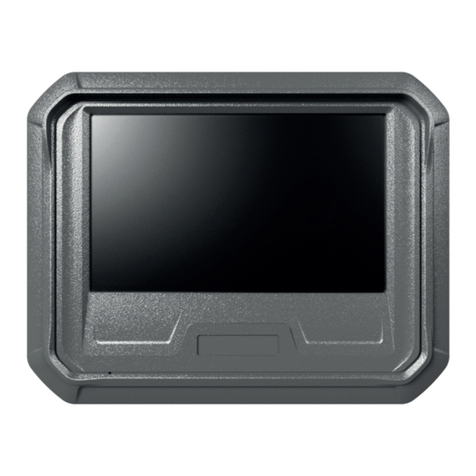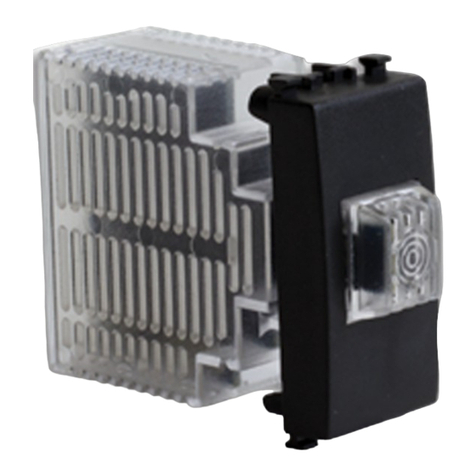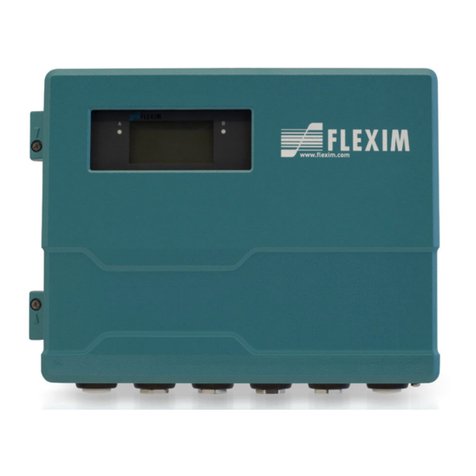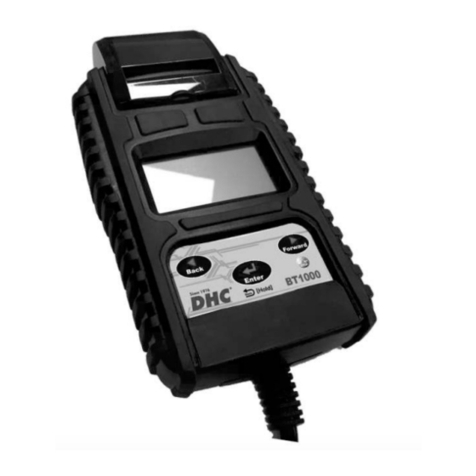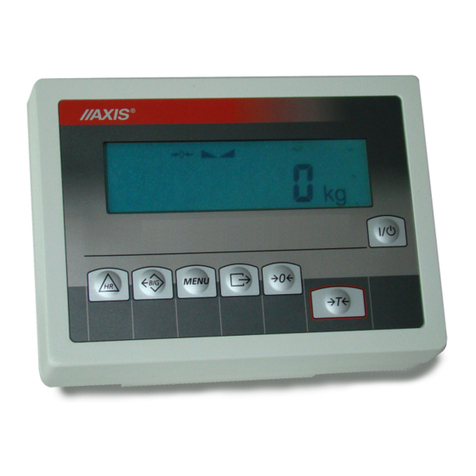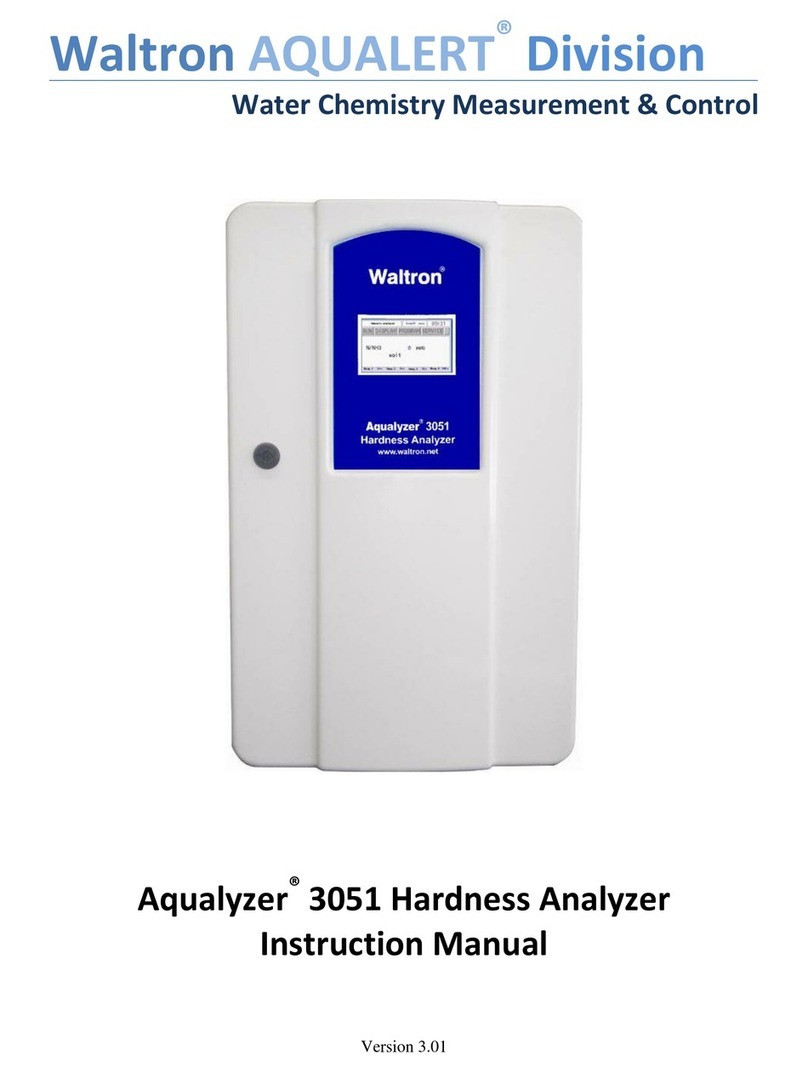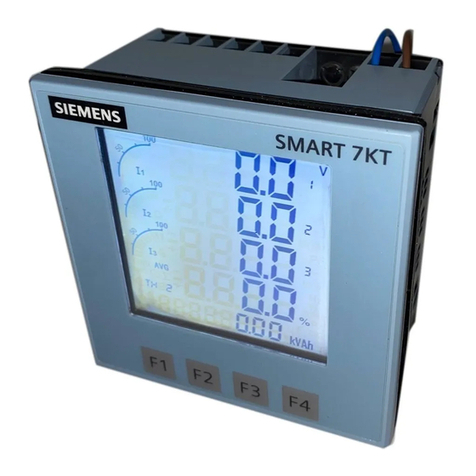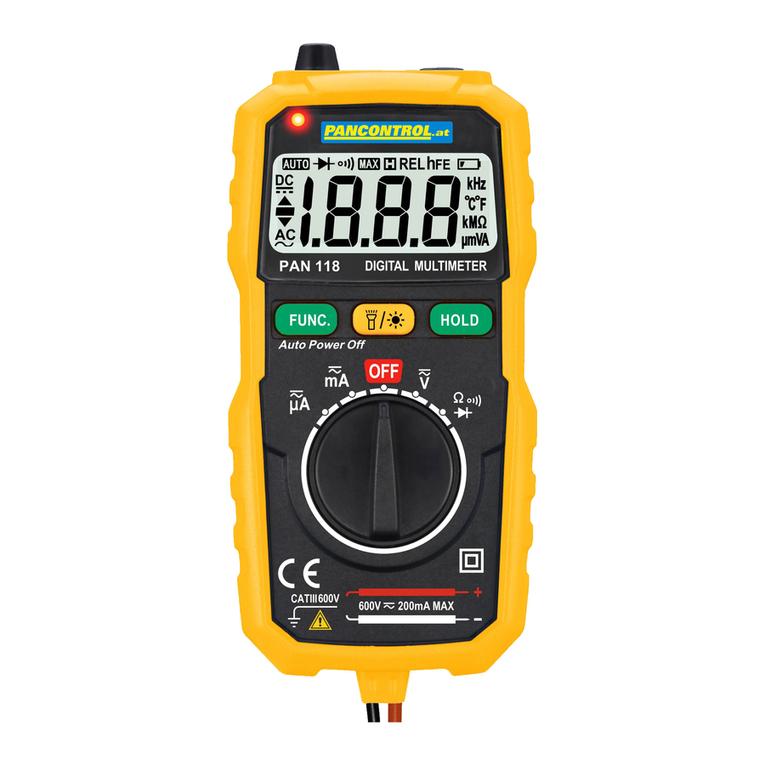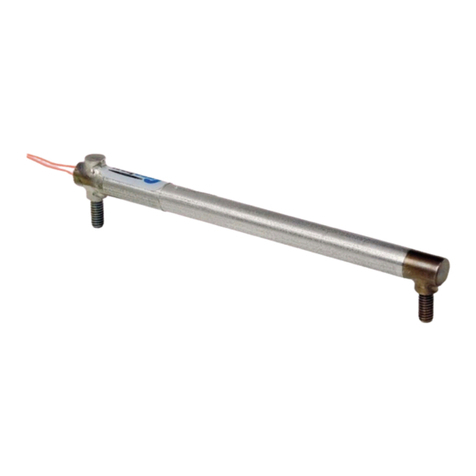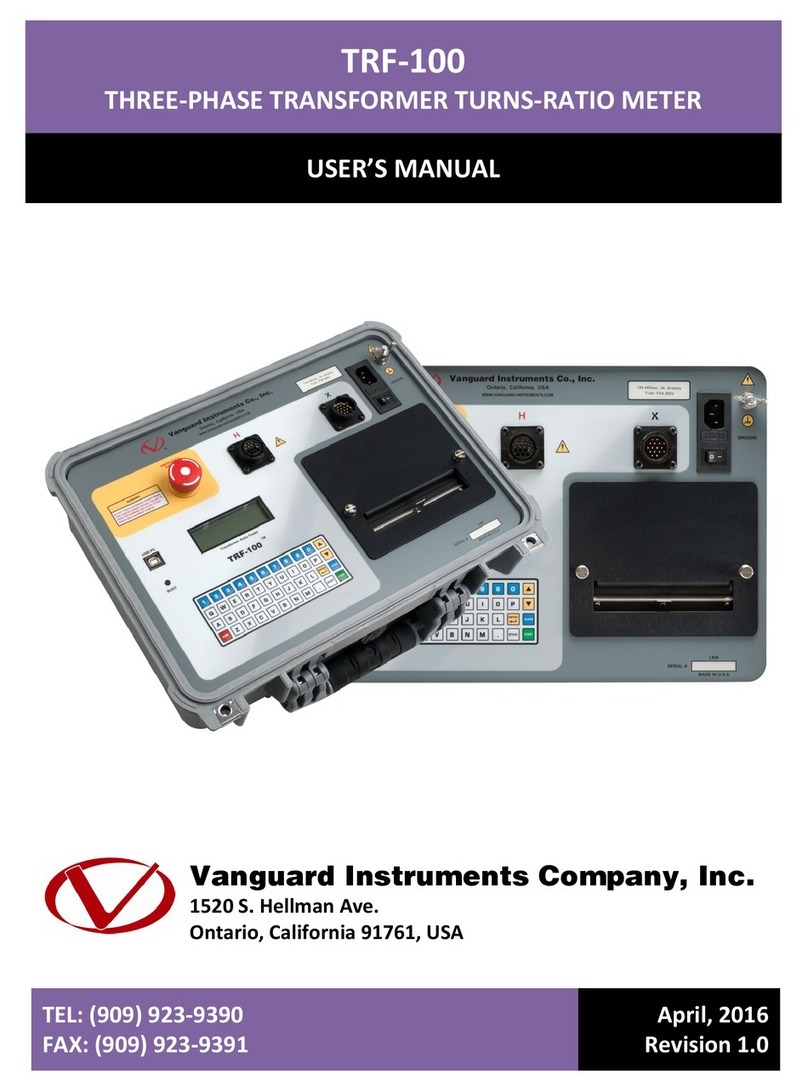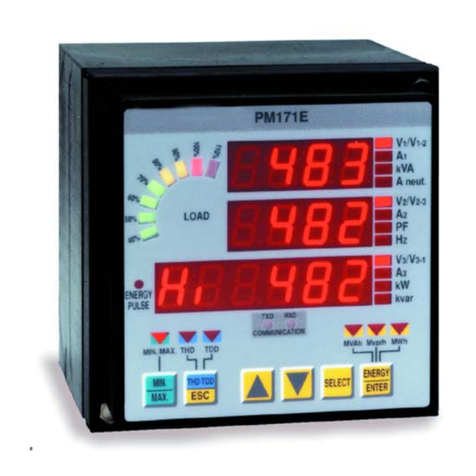Stefan Mayer Instruments FERROMASTER User manual

Stefan Mayer Instruments
FERROMASTER
Permeability Meter
Instruction Manual
– February 2013 –
Stefan Mayer Instruments, Dipl. Phys. Dr. Stefan Mayer,
Wallstr. 7, D-46535 Dinslaken, Germany,
Phone/Fax: +49 2064 479762/3

Contents
1 Safety Precautions 2
2 General Description 2
3 Operation 4
4 Measurement of Permeability 5
4.1 Dependence on the magnetic field strength . . . . 5
4.2 Remanence ..................... 6
4.3 Sample surface . . . . . . . . . . . . . . . . . . . 6
4.4 Dimensions of the sample . . . . . . . . . . . . . 7
4.5 Earth’s magnetic field . . . . . . . . . . . . . . . 7
5 Power Supply 8
6 Specifications 9
7 Warranty 10
1

1 Safety Precautions
The instrument must not be operated in explosive at-
mosphere.
The operation of the instrument is left at user’s risk.
Keep away the probe from magnets or strongly mag-
netic material. Using the instrument to test magnets or
highly magnetic material can damage the instrument.
Before putting the instrument into operation the complete in-
struction manual should be read. The instrument and this man-
ual may be subject to alterations without prior notice.
2 General Description
The permeability meter FERROMASTER has been designed
to measure the relative magnetic permeability µrof feebly mag-
netic material and workpieces with µrbetween 1.001 und 1.999.
The relative magnetic permeability µris a pure number indepen-
dent of the system of units. The relation between the magnetic
field B, the magnetic permeability, and the magnetizing field H
is given by
B=µrµ0H,
where µ0is the vacuum permeability with
µ0= 4π×10−7m kg
A2s2.
The FERROMASTER is used for material selection in applica-
tions where totally non-magnetic material must be used. Exam-
ples are: electron microscopes, electron/ion spectroscopy, NMR
systems, and compass navigation. Apart from quality control of
stainless steel and other alloys the instrument can also be used
for the detection of material defects induced by stress.
2

The permeability is measured by touching the workpiece with
the tip of the permeability probe and reading the result from
the LC display.
The permeability probe contains a small permanent magnet
which magnetizes the sample to be investigated in the vicinity of
the probe tip. Two sensitive magnetic field sensors in difference
connection measure the distortion of the magnetic field intro-
duced by the magnetized sample. The instrument is calibrated
to precise reference standards manufactured by the National
Physical Laboratory (NPL, Teddington, UK). The calibration
can be easily readjusted. A calibration standard is supplied with
each instrument.
As a special feature the FERROMASTER is provided with a
robust waterproof case (protection IP65) and is therefore well
suited to applications in harsh industrial environments. The
built-in battery serves for ∼50 hours operation.
3

3 Operation
Before the instrument is switched on the protective cap must
be removed from the permeability probe. The probe and its
metal tip which is now visible must not be exposed to a
strong magnetic field because the magnetic properties
of the built-in permanent magnet may then change, and
the instrument can be damaged. The magnetic field in
the vicinity of the probe should never be much larger
then the Earth’s magnetic field, even when the instru-
ment is switched off. Do not use the instrument for
testing of magnets or highly magnetic material!
The function of the instrument controls is as follows:
Push button ON / ZERO:
Pressing the ON /ZERO button switches on the instrument and
starts an automatic zeroing procedure. During automatic zero-
ing several dots are displayed between the digits on the LC dis-
play. The duration of the automatic zeroing procedure depends
on the actual offset error and usually takes a few seconds. In
extreme cases the zeroing procedure can take up to 2 minutes.
After successful zeroing the display shows 1.000. The instru-
ment is now ready for operation.
The zeroing can be repeated any time by pressing the ON /
ZERO button. During automatic zeroing the probe tip must
not touch any material and the probe must not be moved.
The instrument automatically shuts down 15 minutes after the
ON / ZERO button has been pressed the last time.
Push button OFF:
The instrument is switched off by pressing the OFF button. The
display goes blank.
Calibration trimmer:
The trimmer is located at the instrument’s top near the cable
grommet. The calibration factor can be changed by turning
4

the calibration trimmer with a suitable screw driver. The in-
strument is factory calibrated. A change of calibration is not
recommended. Further details concerning the calibration of the
instrument are described in the next section.
4 Measurement of Permeability
In order to measure the magnetic permeability of a workpiece or
sample of material the permeability probe is placed perpendic-
ularly on the surface of the sample. The tip of the probe should
slightly touch the sample but any mechanical load of the tip
should be avoided. The measured permeability value is shown
on the LC display.
The FERROMASTER is calibrated to precise permeability stan-
dards which have been manufactured and calibrated by the Na-
tional Physical Laboratory (NPL, Teddington, UK). For easy
check of the calibration a calibration standard is supplied with
each instrument. In order to check the calibration the perme-
ability probe is placed perpendicularly on the top of the stan-
dard so that the tip touches its center. The measured value
should correspond with the number printed on the standard.
The calibration can be readjusted by turning the trimmer CAL
on top of the instrument with a screw driver. The calibration
standard should be protected against mechanical load and ex-
posure to strong magnetic fields.
The magnetic permeability and the result of a permeability mea-
surement depend on a number of factors which must be taken
into account if a precise measurement is to be made. In partic-
ular, the following points should be considered:
4.1 Dependence on the magnetic field strength
The magnetic permeability of a material depends on the strength
and frequency of magnetizing field. The permeability probe of
5

the FERROMASTER contains a permanent magnet which pro-
duces a constant magnetizing field of ∼35 kA/m.
4.2 Remanence
Many materials, like some sorts of stainless steel, can be perma-
nently magnetized in a strong magnetizing field. The magneti-
zation which remains when the magnetizing field is switched off
(remanence) influences the permeability measurement because
the sensors in the probe are sensitive for any inhomogenous field
which emerges from the sample. It is therefore recommended to
demagnetize permanently magnetized samples in an alternating
magnetic field with decaying amplitude before starting a per-
meability measurement.
It should be also taken into consideration that a permanent
magnetization of the sample may be introduced by the perme-
ability measurement itself since the sample is magnetized by the
permanent magnet of the probe.
4.3 Sample surface
For accurate measurements it is important that the probe is
placed perpendicularly on the surface of the sample. A tilt may
slightly shift the measured values. The instrument is calibrated
to reference standards with flat surface. The measurement may
be distorted if the sample to be measured has a non-flat surface.
If very small pieces or parts with complicated shape should be
investigated it may be useful to make reference samples of a
material with known permeability.
6

4.4 Dimensions of the sample
For small samples the result of the permeability measurement
depends on the dimensions of the sample. For example, the
sensitivity of the instrument increases with increasing sample
thickness. The sensitivity is independent of the dimensions for
samples which are more than ∼5 mm thick and have a lateral
diameter of more than 2 cm. The sensitivity as a function of
the sample thickness is shown in the following diagram. The
sensitivity is defined as (µrmeasured −1)/(µrtrue −1).
4.5 Earth’s magnetic field
The permeability probe contains two magnetic field sensors which
are connected differentially. Therefore, the influence of any ho-
mogenous magnetic field (Earth’s field) is almost suppressed.
Nevertheless, inhomogenities introduced by ferrous objects and
a residual mismatching of the sensors may cause offset errors
if the probe is turned around. It is therefore recommended to
fix the probe in space and to move the sample instead if the
expected permeability is much below 1.01.
7

5 Power Supply
The FERROMASTER is powered by a 9 V battery which serves
for ∼50 hours operation. If the capacity of the battery is ex-
hausted ”LOBAT” is shown in the upper right corner of the
digital display. The battery should then be replaced. In order
to open the battery compartment the two lower screws on the
back of the instrument must be removed. It is also possible
to use rechargeable NiCd or NiMH batteries of the same type.
Used batteries are toxic waste and should be properly disposed
of!
8

6 Specifications
Measurement range µ= 1.001 to 1.999
Resolution 0.001
Calibration accuracy at 20 ◦C (µ−1)×5%,
ref. to NPL calibration
standards,
can be readjusted
Operating temperature 0 to 50 ◦C
Field strength at probe tip ∼35 kA/m
Battery 9 V (PP3, Alkaline)
Continuous operation with 1 battery ∼50 h
Dimensions of electronics unit 151×82×33 mm3
Environmental protection IP65
Length of connection cable 1.5 m
Weight of complete instrument 280 g
Dimensions of the permeability probe in mm
Subject to alterations.
9

7 Warranty
All components of the permeability meter FERROMASTER are
warranted to be free from defects in material and workmanship
for a period of two years from the date of delivery to purchaser.
The guarantee will apply only if the instrument is operated in
accordance with this instruction manual and if the instrument
is not changed by the purchaser. In the case of any defect please
contact Stefan Mayer Instruments.
Serial number:
Begin of warranty:
End of warranty:
Date, signature:
Stefan Mayer Instruments
Dipl. Phys. Dr. Stefan Mayer
Wallstr. 7
D-46535 Dinslaken
Germany
Phone/Fax: +49 2064 479762/3
10
Table of contents
Other Stefan Mayer Instruments Measuring Instrument manuals
